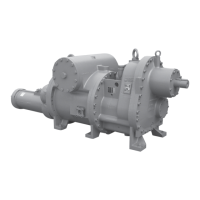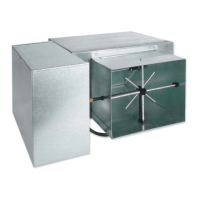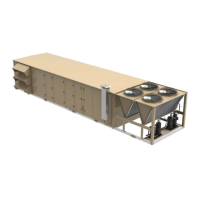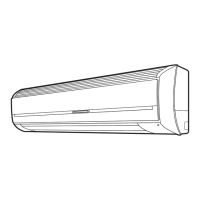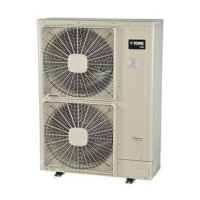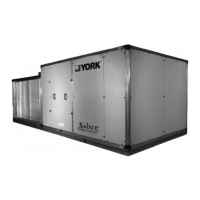JOHNSON CONTROLS
41
FORM 100.50-NOM12
ISSUE DATE: 04/02/2019
3
SECTION 3 – START-UP
To protect warranty, this equipment must
be installed and serviced by an authorized
Johnson Controls service mechanic or a
qualied service person experienced in
air handling and condenser unit instal-
lation. Installation must comply with all
applicable codes, particularly in regard to
electrical wiring and other safety elements
such as relief valves, HP cut-out settings,
design working pressures and ventilation
requirements consistent with the amount
and type of refrigerant charge.
Lethal voltages exist within the Control
Panel. Before servicing, open and tag all
disconnect switches.
Reference Quick Start-Up Guide (Form
100.50-SU1) for additional information.
CRANKCASE HEATERS
With power applied to the rooftop unit, the crankcase
heater for each compressor is ON whenever the com-
pressor is not running. The heater is interlocked into
the compressor motor contactor and is not controlled
by the microprocessor.
The purpose of the crankcase heater is to prevent the
migration of refrigerant to the crankcase during shut-
down, assuring proper lubrication of the compressor
on start-up.
Anytime power is removed from the unit for more than
an hour, the crankcase heater should be left ON for 24
hours prior to start.
Power must be applied to the rooftop unit
24 hours prior to starting the unit com-
pressors. Failure to observe this require-
ment can lead to compressor damage and
voiding of the compressor warranty.
CHECKING THE SYSTEM PRIOR TO INITIAL
START (NO POWER)
Unit Checks
1. Inspect the unit for shipping or installation dam-
age.
2. Visually check for refrigerant piping leaks.
3. The compressor oil level should be maintained so
that an oil level is visible in the sight glass. The
oil level can only be tested when the compressor
is running in stabilized conditions, guaranteeing
that there is no liquid refrigerant in the lower shell
of the compressor. In this case, the oil must be be-
tween 1/4 and 3/4 in the sight glass. At shutdown,
the oil level can fall to the bottom limit of the oil
sight glass.
4. Check the control panel to assure it is free of for-
eign material (wires, metal chips, etc.).
5. Visually inspect eld wiring (power and control).
Wiring MUST meet N.E.C. and local codes.
6. Check tightness of terminal lugs inside the power
panel on both sides of the contactors, overloads,
fuses, and power connections.
7. Verify fuse sizing in main circuits.
8. Verify eld wiring for thermostat (if applicable),
optional zone sensor, etc.
9. Verify all applicable pneumatic tubing has been
eld installed for duct static pressure transduc-
ers (VAV units), optional building pressure trans-
ducer for power exhaust option, and outdoor static
pressure prove.
10. Supply fan isolators spring bolts removed (refer to
Figure 15 on page 42).
11. Verify proper bearing and locking collar torque
values on supply and exhaust fans (refer to SEC-
TION 4 – MAINTENANCE of this manual).
12. Verify proper drive alignment of supply and
exhaust fans (refer to SECTION 4 – MAINTE-
NANCE of this manual).

